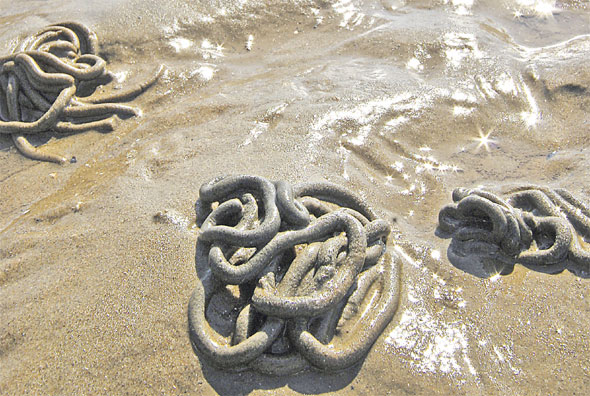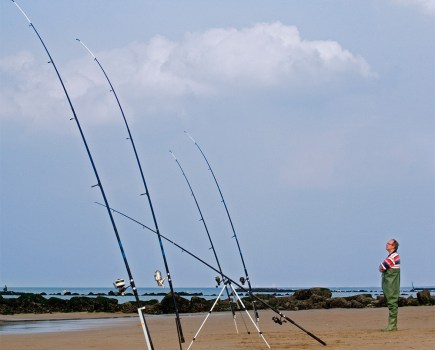If you’ve ever walked your local beach and noticed small mounds of squiggly sand, then it’s a good chance that there’s a population of lugworm right under your feet.
At this time of year, the beach anglers’ favourite species is cod and, if you want to realistically target them, having a good supply of lug will optimise your chances of bagging one.
Lugworm and cod are synonymous with each other, but often enough, getting a supply at very short notice from your local tackle dealer can be difficult.
Demand from shore anglers will be high once they know that the cod are in feeding, so should you really be relying on a bait order from the tackle shop?
The simple answer is no, but instead you can go out on to the beach and get your own. The only tools you will need for the job is a garden potato fork or a pump and a bucket to store them.
Potato forks are better than normal conventional garden forks because the tines are flatter and wider, which will enable you to lift more sand in a single dig and reveal the lugworm that lie beneath the surface.
Pumps are perfect when the sand is a lot softer as holes can quickly fill with water if dug with a fork.
Locating a squiggle (more conventionally known as a cast) is easy. This is where the worm is feeding and, with every intake of sand a worm takes, it will pass the waste sand on to the surface. Blow lug will lie in a U-shaped burrow and will normally have a blow hole. Locate the cast and blow hole, and in between these will lie the worm. Use the fork to dig at this point to reveal a fresh, juicy lugworm.
You can dig blow lug singly, but if you decide on an area to dig, simply turn the sand over or trench, and you will soon see your bait bucket fill up with a supply that will get you through a few sessions.
Remember, when turning sand over with a fork, you will probably create a soft area or, at worst, a big hole, so back-fill your holes with the sand you’ve dug, to prevent the area becoming a swamp.
Black lug on the other hand don’t live in a U-shaped burrow, but instead in a vertical burrow. These can go quite deep and, by using a pump pushed into the sand, you can simply suck the worm from its burrow. Keep these in a small amount of water in your bucket to prevent them from bursting.
Once home, rinse the lugworm in fresh seawater and remove any sand that may be visible. Store them in 2ins of seawater in cat litter trays and then simply leave them in a cold fridge, where they can be kept for several weeks.
Keep a 2-litre bottle of seawater in the fridge because if the water in the tray becomes discoloured, it will have to be changed.
By having a bottle of seawater in the fridge, it will soon become the same temperature as the lugworm kept in a tray. If you do need to change the water, there will be no sudden change in temperature to the worms, which may result in them dying.
Having your own supply in your bait fridge at home means you can decide to go fishing whenever the conditions are perfect for cod, while the angler who relies on a supply of bait from the tackle shop may be disappointed and consequently, miss out on a good day’s fishing.
Take blow lug to a session wrapped in dry newspaper, where they will soon dry out and be much easier to handle. Wrap them in packets of 50s, so you know how much worm you have with you. Black lug or yellowtails can be transported in buckets of water to keep them fresh.
Any that you have left over from a session can quickly be put back into the fridge, ready for your next outing.
Digging your own supply of lugworm can, in the long run, work out to be cheaper, but the self-satisfying feeling you get when you land a cod with bait you collected yourself will be memorable.








